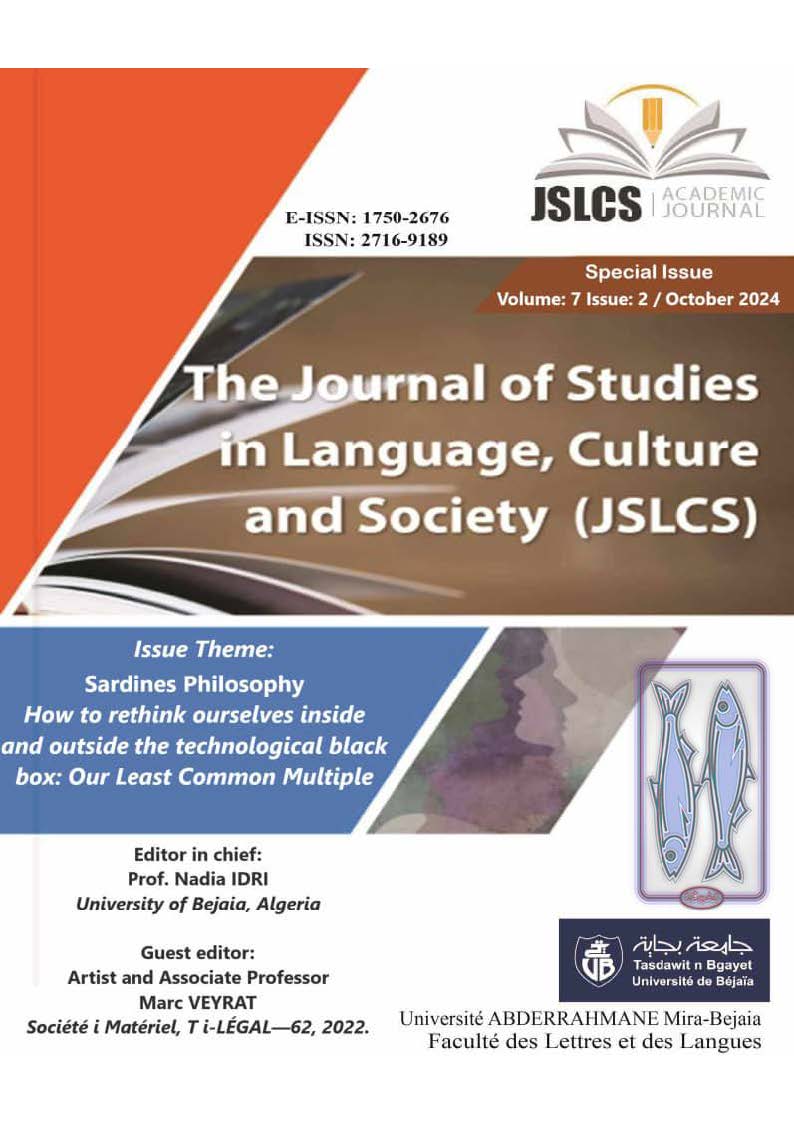Texting Language As A Digital Symbolic Current: Implications For Pragmatics And Intercultural Communication In The Digital Age.
Keywords:
texting language, digital communication, intercultural communication, pragmatics, academic writingAbstract
This study investigates the influence of texting language on digital communication and its implications for pragmatics and intercultural communication. Utilizing a case study approach, the research examines the written work of final-year linguistics students at the University of Benin, Nigeria, to understand the extent to which short messaging service (SMS) abbreviations permeate academic writing. Building on the metaphor of texting language as a "common symbolic current" akin to the sardine metaphor, this paper explores how digital communication transcends cultural boundaries and creates new linguistic norms. The research is grounded in a comprehensive analysis of questionnaires, written assignments, and examination scripts from 62 students, highlighting the prevalence of SMS-related abbreviations in their written work. The findings reveal that while students frequently use texting abbreviations in informal contexts and notetaking, their usage in formal academic writing is more restrained (Braimoh, 2020). This indicates an awareness among students of the need to adapt their writing style to different contexts, thereby demonstrating a nuanced understanding of pragmatic competence in digital communication. Furthermore, the study discusses the broader implications of texting language on intercultural communication, emphasizing its role as a digital symbolic current that facilitates cross-cultural understanding. The paper concludes by suggesting that future research should explore the intersection of digital technologies, linguistic practices, and intercultural communication to further elucidate the impact of digital communication on language and culture.
References
Adesope, O. O., Lavin, T., Thompson, T., & Ungerleider, C. (2010). A systematic review and meta-analysis of the cognitive correlates of bilingualism. Review of Educational Research, 80(2), 207-245.
Amos, T. (2018). 140 million Nigerians use mobile phones – NCC. Daily Post Newspaper, 2March. Available from http://dailypost.ng/2018/03/02/140-million-nigerians-use-mobile-phones-ncc/ [Accessed 20 March 2019].
Baudrillard, J. (1997). Écran total. Éditions Galilée.
Blom, E., Küntay, A. C., Messer, M., Verhagen, J., & Leseman, P. (2014). The benefits of being bilingual: Working memory in bilingual Turkish–Dutch children. Journal of Experimental Child Psychology, 128, 105-119.
Braimoh, J. (2020). The impact of texting language on Nigerian students: Acase study of final year linguistics students. Per Linguam, 36(1), 15-31. http://dx.doi.org/10.5785/36-1-900.
Coe, J. E. L., & Oakhill, J. V. (2011). ‘txtN is ez fu no h2 rd’: The relation between reading ability and text‐messaging behaviour. Journal of Computer Assisted Learning, 27(1), 4-17.
Crystal, D. (2001). Language and the Internet. Cambridge University Press. https://doi.org/10.1017/CBO9781139164771.
Crystal, D. (2008). The joy of txt. Spotlight, 16-21. Available fromhttps://ecitydoc.com/download/the-joy-of-txt-spotlight-online_pdf [Accessed 16May2019].
Crystal, D. (2009). Txtng: The gr8 db8. Oxford University Press.
Dijk, C. N., van Witteloostuijn, M., Vasić, N., Avrutin, S., & Blom, E. (2016). The influence of texting language on grammar and executive functions in primary school children. PloS One, 11(3). https://doi.org/10.1371/journal.pone.0152409.
Freudenberg, K. (2012). Investigating the impact of SMS speak on the written work of English first language and English second language high school learners. Stellen bosch University (MA Thesis).
Humphrys, J. (2007). I h8 txt msgs: How texting is wrecking our language. Daily Mail, 24September. Available from https://www.christs-
hospital.lincs.sch.uk/images/PDFS/English/Mobile_phones_lively_article.pdf[Accessed 21 May 2009].
Hymes, D. (1972). On communicative competence. In J. B. Pride &J. Holmes (Eds.), Sociolinguistics: Selected Readings (pp. 269-293). Penguin Books.
Ling, R. (2005). The socio-linguistics of SMS: An analysis of SMS use by a random sample of Norwegians. In Mobile communications: Renegotiation of the social sphere (pp. 335-350). Springer.
Plester, B., Lerkkanen, M.-K., Linjama, L., Rasku-Puttonen, H., & Littleton, K. (2011). Finnish and UK English pre‐teen children's text message language and its relationship with their literacy skills. Journal of Computer Assisted Learning, 27(1), 37-48.
Pullum, G. K. (2012). Waterstones. Language Log. Available fromhttps://languagelog.ldc.upenn.edu/nll/?p=3705 [Accessed 18 March 2012].
Thurlow, C. (2003). Generation Txt? The sociolinguistics of young people's text messaging. Available from https://extra.shu.ac.uk/daol/articles/v1/n1/a3/thurlow2002003.html [Accessed 19 May 2019].
Thurlow, C., Lengel, L., & Tomic, A. (2004). Computer mediated communication. Sage.
Veyrat, M. (2022). How to rethink ourselves inside and outside the technological blackbox: Our least common multiple. Societe i Materiel, T i-LÉGAL—62.
Verheijen, L. (2013). The effects of text messaging and instant messaging on literacy. EnglishStudies, 94(5), 582-602.
Winzker, K., Southwood, F., & Huddlestone, K. (2009). Investigating the impact of SMS speak on the written work of English first language and English second language high school learners. Per Linguam, 25(2), 1-16.








